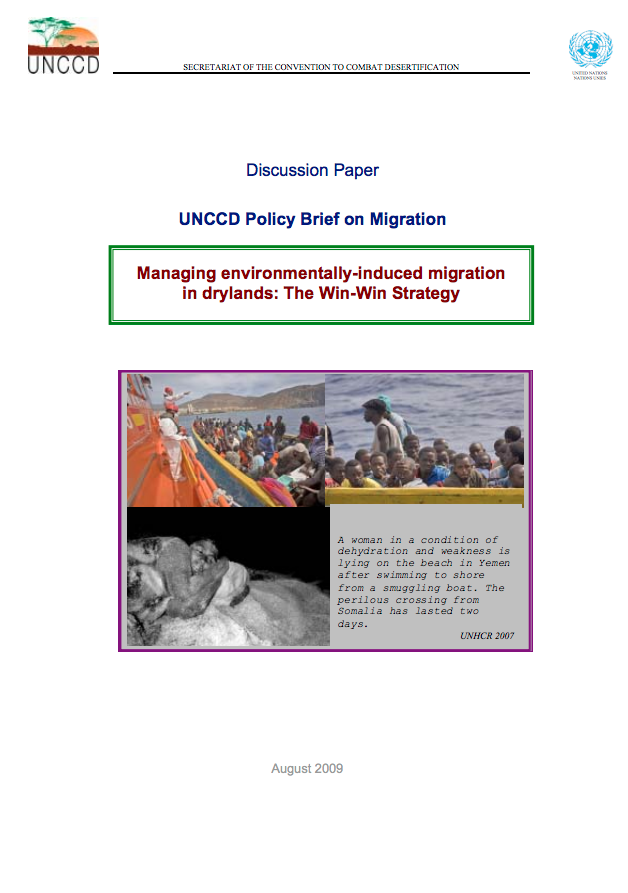Resource information
Human activities have resulted in unprecedented phenomena and severe impacts for the 21st century such as land degradation, natural resources scarcity, climate change, and a rapid decline in biodiversity. These alterations engender secondary effects such as political conflicts, disputes over resources, social disruptions and sudden shocks of catastrophic weather events which are becoming more frequent in critical regions of the world, particularly in drylands; and exacerbate threats for human, national and international security.
Often powerless in the face of the unpredictable, but more often uniformed, the vulnerable populations mostly afflicted by these man-made adversities sometimes have no alternative other than to migrate in search of safety and food security as a survival mechanism or of a better environment to sustain their livelihoods as an adaptation strategy. This resettlement is not an easy process and might be compromised by the receiving area’s willingness to integrate migrants.
Understood as a response mechanism towards poverty, the international community has developed an arsenal of strategies to address the manifold indirect root causes of migration, hence mainly oriented toward reducing a population’s poverty and vulnerability. Despite these efforts, migration continues at its initial pace with the depopulation of rural areas increasing while generating congestion in cities; on the other side, developed countries are facing huge flows of illegal immigrants.
Within the context of drylands, the approach to targeting the root causes of migration have been mistaken. Migrants, themselves, have always explained their mobility to be linked to untenable chronic poverty prevailing in their homeland. Poverty is indeed a determinant of migration but not its root cause. The heart of the matter is in fact more basic: their lands are degraded and productivity is declining along with population’s income. Migration has an environmental dimension. Statistical studies have confirmed that the variables of ‘soil quality’ and ‘availability of suitable water’ have the most significant effects on migration flows. The “common borders between two countries” facilitate the mobility between them (Tafifi & K Warner 2008). Some 60 million people in the Sertão region in the northeast of Brazil for instance have migrated from rural to urban areas within Brazil between 1970 and 2005 due to regular drought periods and the dry season that hits all agricultural activities (Refugee Studies Centre 2008). During the last three decades, 36% out of the 5,076,494,541 affected people from environmental disasters were victims of drought (Guha-Sapir, Debati 2004).


